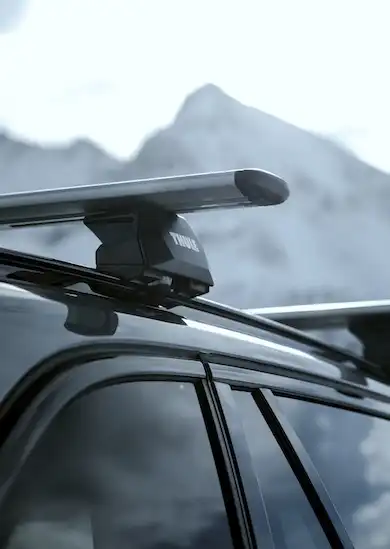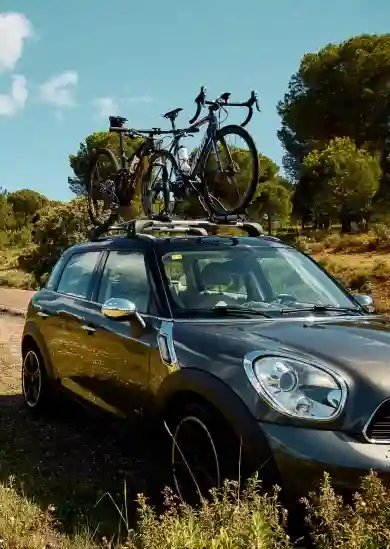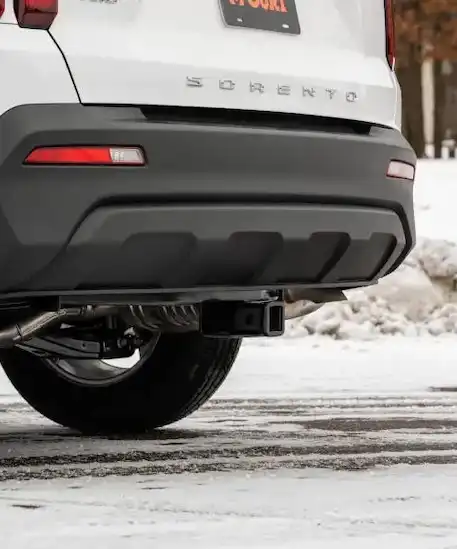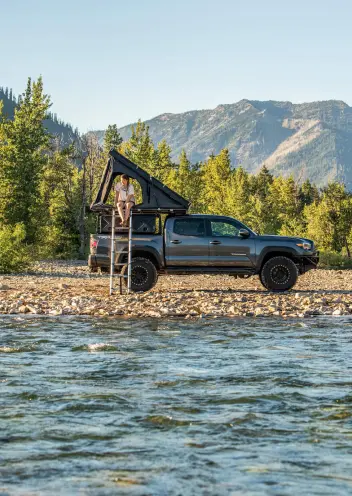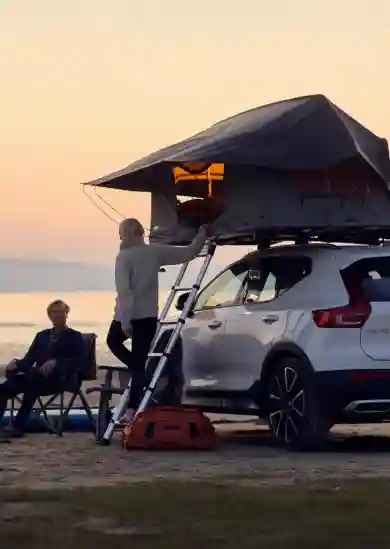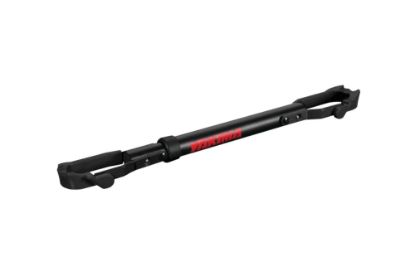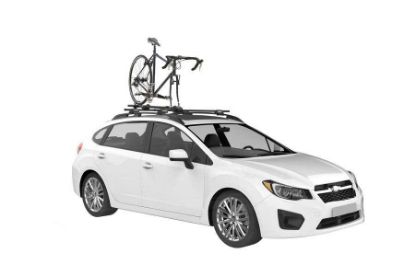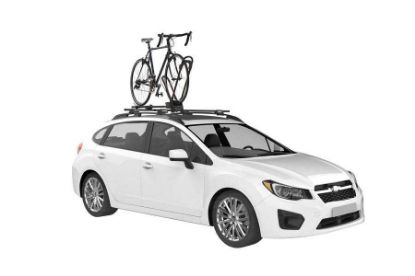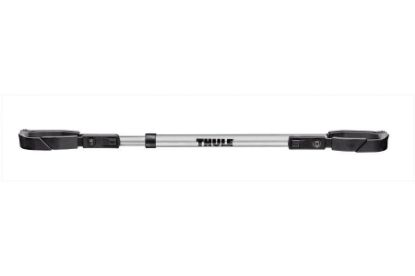March 1, 2020
Rack Attack Team
One of the most common questions we get at Rack Attack is “what is the best bike rack for my car?” Luckily for you, finding this answer is relatively easy.
Bike racks are easier to choose because they are more application specific than many other types of racks. Basically you only need to know a few pieces of basic information to find the perfect rack for your needs:
Where do you want to carry them: on the back of the car, or on the roof?
How many bikes do you need to carry?
What kind of bikes are they?
The total price and number of extra parts you will require depends on your answers to these questions, but don't worry: our goal is to get you the right rack. Our number one concern is always safety and usability, we want to sell you a rack you will enjoy for a long time (most of our racks have lifetime warranties!). Let's get started at the beginning:
Should you carry your bikes on the roof or behind your car?
This is the first, and most important question you will have to answer, but the answer is going to depend on what your car can support.
Bikes on the roof
Pros
- Possible to carry any bike on any vehicle.
- Just about every car can take at least 4 bikes.
- Keeps your trunk free, unobstructed.
- Can reduce the amount of road spray hitting your bike.
Cons
- Requires a base roof rack.
- Can be difficult to load. Max weight capacity of 50lbs or less, so generally not e-bike friendly.
- Can be more expensive for carrying multiple bikes.
- Can be tough with underground parking.
Bikes behind your car
Pros
- Easy loading of your bikes.
- Can be the most affordable option.
- One rack can carry from 1-5 bikes.
- E-bike options! We carry hitch-mounted racks rated to up to 65lbs per bike!
Cons
- Hitch racks require a trailer hitch, but do not worry, we install these!
- Some vehicles (depending on hitch size or trunk mount) are limited to just two or three bikes.
- Racks with bikes can cover the rear licence plate. It's rare, but some customers have reported issues with this.
While you can skip ahead to the section you have chosen now, I suggest you read the full test for each one. Not all racks work with all vehicles. To make sure you get the best bike rack for your car, continue reading.
Putting bikes behind your car
The easiest, often cheapest, and most versatile way to carry bikes is behind your car. But it's not as simple as it may seem. There are three different styles of rear-mount bike racks.
Rear mount bike rack type 1: Hitch racks
Hitch mounted bike racks are considered by most to be the ideal way to carry bikes on a car. They are sturdy, reliable, easy to load, and carry nearly zero risk to damaging your vehicle. The catch is you need to have a receiver hitch installed on your vehicle (again, we install these).
There are two common sizes of hitches on passenger vehicles: 1-¼” and 2”. These hitch sizes will almost always be designated as class 1, class 2, class 3, or class 4. While most bike racks come available for both sizes (some other sizes are available, but may require adapters), the important thing to note is your hitch has two separate weight ratings: the tongue weight and the tow weight.
Since we are not towing anything with a bike rack, we are only interested in the tongue weight. Here is the most important thing you will read all day: due to leverage and physics the actual weight of bikes you can put on your hitch is a fraction of the total tongue weight of your hitch.
Below are the general rules, but note racks will have specific weight ratings, so check with us for specfics.
| Class of Hitch | Receiver Size | Number of Bikes |
| Class 1 | One and one quarter inch | 1 - 2 |
| Class 2 | One and one quarter inch | 1 - 5 |
| Class 3 | Two inches | 1 - 5 |
| Class 4 | Two inches | 1 - 5 |
*Note: This chart is only a guide. Look up the actual class of your hitch, and avoid putting more than two bikes on anything but a class 2 or higher hitch.
If your car does not have a hitch installed on it, it is almost certainly possible to do so. Please give us a call to receive a quote.
Now if you have a hitch, and you know how many bikes you are able to put on it, you're almost ready to go. The last step is choosing the type of rack suitable to the style of bikes you own. If you have ‘standard' bikes, you can basically ignore this, but if you own e-bikes, mountain bikes, or other 'non-standard' sizes, you may want to avoid racks holding the bikes by the frame, and choose a rack that holds your bike by its wheels instead.
Use the tabs below to find the best bike rack for you. Click for a complete listing of hitch bike racks (including 3 and 5 bike models)
Tray Style
These are great options as they are extremely versatile and fit almost any style of bike. In particular, the Easyfold is becoming one of our most popular racks for E-bikes as it includes a ramp, and is rated to 65lbs per bike! The Easyfold comes ready to fit either size of hitch, all the other racks listed here are the 2" versions, but also come in 1 1/4" versions. The 2" versions of the T2, Hold Up and NV can all be extended from 2 bikes to 4 bikes with the purchase of an add-on.
New this year, Thule has also come out with a light-weight aluminum platform, available in 1 or 2 bike Helium Platform models!
Frame Mount with Bike-On Vehicle Access
This style attaches to the frame of the bike. While this can pose a problem for some bikes, frame adapters are available.
New this year, Thule, Yakima and Kuat all make swing-arms to convert the above tray style racks (or the ones below) into racks you can pivot out of the way!
Frame Mount without Bike-On Vehicle Access - Note the Apex and Ridgeback each come in 2, 4 and 5 bike options. The Helium comes as a 2 or 3.
Rear mount bike rack type 2: Spare tire racks
If you do not have a hitch, but you have a spare tire hanging off the rear of your vehicle, it's possible for you to use a spare tire rack to carry up to two bikes. See your choices below.
Spare Tire Mounted Racks
Rear mount bike rack type 3: Trunk mount racks
The final type of bike racks are trunk mount racks. These racks are often the cheapest rack option available, but they need to be approached with caution. On top of being slightly annoying to mount, these racks mount with hooks and straps to the metal of your vehicles trunk. There is an extremely high possibility of light scuffing or scratching of your vehicle.
One of the biggest shortfalls of trunk mounted bike racks is how they will loosen as you drive. The looser the fit of the rack, the more the rack may move against your vehicle, increasing the chances of vehicle damage.
Finally, you will generally be unable to access your trunk while this rack is mounted. It may need to be removed entirely and re-installed for trunk access. These racks can carry up to three bikes, but it's very important to adhere to the racks maximum weight limits, typically around 35 lbs per bike.
Putting bikes on the roof of your car
Roof mounted bike racks are reliable and solid. If you do other sports, or use your vehicle for carrying just about anything you don't want to put in the trunk, you can use the same base racks to carry just about anything as well as your bikes. The only real shortfalls of a roof bike rack is the bike's height (for loading).
To carry bikes on your roof you first need a base rack, two cross-bars going door-to-door across your roof. If you do not have these you will have to install them first. Use our base roof rack fit guide to see the options for your vehicle.
Once you have your cross-bars, you can now mount a bike rack. Remember each rack can carry one bike, and the typical roof can carry four bikes total, but that number will depend on the length (and load capacity) of your cross-bars.
Note - If you have factory cross-bars, you may require adapters to attach the following racks. Please read the product listing to confirm.
The main difference between these racks is whether or not you take off the front tire of the bike, and attach directly to the fork of the bike. This adds a step to loading, but makes for a very secure rack that takes up less space on your crossbars, leaving room for more bikes! The wheel on carriers fit to most bikes, and let you keep your tire with your bike.
